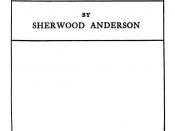"Their Eyes Were Watching God"ÃÂ and "Winesburg, Ohio"ÃÂ Both Zora Neale Hurston's Their Eyes Were Watching God and Sherwood Anderson's Winesburg, Ohio provide great examples of community, although there are stark differences in the way the two respective authors present them.
In Their Eyes Were Watching God, the main character Janie moves to the town of Eatonville, Florida with her second husband Jody Starks. The move was to flee her arranged first marriage to a man that she did not love, and also gain some stature in a community.
The "All-Negro town"ÃÂ of Eatonville is Jody's dream. It turns out to be a big disappointment to him though, and he takes on the responsibility of building and leading the town. This preoccupation causes Joe to slowly but surely lose interest in his wife and become overbearing towards her. Janie finds that Jody is no more interested in letting her speak than Logan Killicks: "...mah
wife don't know nothin' "ÃÂbout no speech-makin'. Ah never married her for nothin' lak dat. She's uh woman and her place is in de home"ÃÂ (41).
Sherwood Anderson presents his fictional middle-America town of Winesburg through inter-connected short stories. The character of Winesburg Eagle journalist George Willard in these stories is the bond.
On the surface, Winesburg is a functional town that could be perceived as an example of an American dream community. Anderson proves this idea wrong in presenting the characters as lonely "ÃÂ and feeling a part of nothing. Many envision life in the big cities (such as Chicago) as superior, and some have made plans to leave.
In "Adventure,"ÃÂ Alice Hindman wished to travel (unmarried) to Cleveland with her lover, but at his request remains in Winesburg and never hears from him again. After over a decade of waiting, she has the realization that he will never come for her: "(Hindman) began trying to force herself to face bravely the fact that many people must live and die alone, even in Winesburg"ÃÂ (102).
Parallels can be drawn between Janie and residents of Winesburg such as Hindman and Louise Bentley. All are searching for love, and more importantly "ÃÂ a purpose in life and their differing communities.
Through trial and error Janie does find love in her third husband Tea Cake, but ironically is forced to kill him in self-defense after a rabid dog bites him. Despite the tragic turn of events towards the end of Hurston's novel, when Janie is finished telling her life story to the residents of Eatonville, the reader senses that she feels fulfilled and has a sense of calm. In other words, she knows where she belongs.
In Winesburg, Ohio, Anderson's characters find no such peace. In the final story, "Departure,"ÃÂ Willard boards a train to an unspecified city after walking through Winesburg at dawn and finally saying goodbye to various townspeople. Because of the way Anderson has crafted the book, the reader feels as if they know the town of Winesburg just as well as Willard "ÃÂ and is taken away on the train ride with him.
A common theme shared by both texts is isolation. Even though communities are represented in both, certain characters do find themselves cut off from contact from others.
After Janie starts her life with Jody in Eatonville, she begins to grow tired of always having to act as if she was above everybody in the town. She would have preferred to be a normal towns person - joining in on the great talks and laughs on the store porch with the rest of the people, but this was forbade by Jody. Jody also prohibited her from wearing her long, beautiful hair down in public, feeling that it called attention from the other men.
When Jody asks Janie how she likes being the wife of the mayor she replies: "Jody, it jus' looks lak it keeps us in some way we ain't natural wid one "ÃÂnother. You'se always off talkin' and fixin' things, and Ah feels lak Ah'm jus' markin' time. Hope it soon gits over"ÃÂ (43).
In Anderson's "Loneliness,"ÃÂ Enoch Robinson moves to New York and meets plenty of friends, but grows tired of them quickly. Eventually, after a failed marriage he is totally surrounded by his imaginary friends "ÃÂ who he needs to be happy. As the story is told to the reader and George Willard, Robinson is lonely back in Winesburg and all his friends have left him.
Another example of this theme in Winesburg, Ohio is the story "Hands,"ÃÂ which tells the story of Wing Biddlebaum, who lives on the fringes of the town. His only friend is George Willard, but the entire town knows and is in a sense "ÃÂ proud of how agile his hands can be. As Biddlebaum tells Willard, however, his hands have gotten him in trouble.
As Hurston and Anderson show their readers, communities provide an excellent frame; or in Winesburg, Ohio's case "ÃÂ focus for telling a story.

